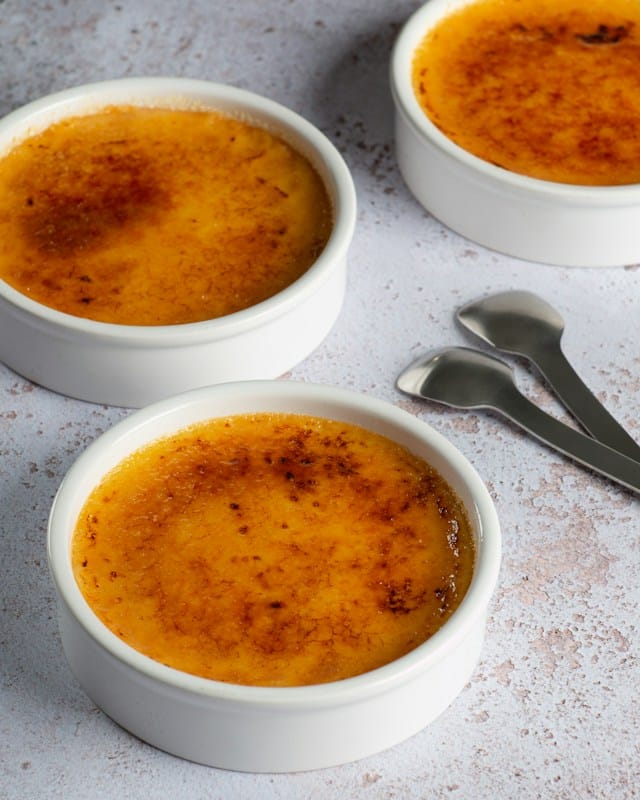What are the secrets to making flawless creme anglaise?

Creme anglaise, a classic, silky dessert sauce, is the cornerstone of many pastries and sweet treats. Its rich, vanilla-infused taste can elevate a simple slice of cake, or add a touch of sophistication to a chocolate dessert. Mastering this French custard is a rite of passage for any pastry enthusiast, and while the ingredients are simple—egg yolks, sugar, milk, and vanilla—the process requires precision, patience, and practice. If you’ve ever been daunted by the prospect of making creme anglaise, fear not. We’ll break down the process and share some secrets to help you make a flawless, lump-free creme anglaise every time.
The Role of Ingredients and Their Perfect Ratio
The first secret to perfect creme anglaise lies in understanding the role of each ingredient, and knowing their perfect ratio. The base of the cream, the milk, lends its rich, creamy characteristic, acting as the canvas for the other flavors to shine. The egg yolks are the thickening agent, providing the sauce with its luxurious, velvety texture. The sugar has a dual role, not only sweetening the sauce but also inhibiting the coagulation of the egg proteins, thus preventing curdling. Lastly, the vanilla infuses the sauce with its aromatic, subtly sweet flavor.
Sujet a lire : How to create a healthy and delicious detox salad?
The ratios of these ingredients are critical. For every 250ml of milk, you will need 50g of sugar, 3 egg yolks, and 1 vanilla pod. Straying from these ratios may lead to a sauce that is too thin or thick, overly sweet, or bland.
The Precise Steps to Get the Perfect Texture
The process of making creme anglaise requires careful attention to detail. You start by heating the milk and vanilla just until it begins to steam. While the milk is heating, you will cream together the egg yolks and sugar until they become pale and frothy. This is the time to slowly, very slowly, pour the hot milk into the egg/sugar mixture while whisking continuously. The slow addition of milk will prevent the eggs from cooking too quickly and forming lumps.
A découvrir également : How to create an impressive french dinner party menu?
Returning the mixture to low heat, you must stir continuously until the sauce thickens enough to coat the back of a spoon. You must ensure that the sauce never reaches a boil, as this will cause the eggs to curdle. After the sauce has thickened, it should be immediately removed from the heat and strained to ensure a smooth texture.
The Importance of Straining and Cooling
Once your creme anglaise is off the heat, it is important to strain it through a fine mesh sieve to remove any bits of cooked egg, ensuring a perfectly smooth texture. The straining should be done as soon as possible, while the sauce is still hot.
The cooling process is equally important. Placing the sauce in a bowl, you should place this bowl in an ice bath and stir the sauce regularly to cool it down quickly and evenly. This prevents the sauce from continuing to cook in its residual heat and potentially curdling.
How to Store and Serve your Creme Anglaise
Once your creme anglaise is cooled, it will need to be covered tightly with plastic wrap, ensuring the wrap is touching the surface of the sauce to prevent a skin from forming. It can then be stored in the refrigerator for up to three days.
When it comes to serving, creme anglaise is versatile. It can be drizzled over a warm piece of cake, spooned over fresh fruit, or added to your favorite coffee. However, avoid reheating your creme anglaise as this could cause it to split.
Correcting Mistakes: Creme Anglaise to the Rescue
Even the most experienced pastry chefs can run into trouble when preparing creme anglaise. If your cream does start to curdle, immediately remove it from the heat and whisk vigorously, or better yet, use a blender to smooth it out. If your sauce is too thin, return it to the heat and continue to cook, stirring continuously, until it thickens to the desired consistency.
Remember, practice makes perfect. The more you make creme anglaise, the more comfortable you will become with the process, ultimately producing a flawless, silky smooth dessert sauce that is sure to impress.
The Marriage of Creme Anglaise with Other Desserts
Integrating creme anglaise into other pastries or desserts can bring a new level of depth and complexity. One such example of this integration is the use of creme anglaise as a base for creme patissiere or pastry cream, which is a key component in numerous classic French desserts. To transform your creme anglaise into creme patissiere, additional egg yolks and a little flour or cornstarch is added for extra thickening. The result is a rich, custard-like cream perfect for filling eclairs or as a base for fruit tarts.
Another surprising but delightful combination is a gluten-free chocolate cake served with a drizzle of creme anglaise. The rich creaminess of the sauce compliments the dense chocolate flavour, providing a decadent dessert experience. The process of integrating creme anglaise with other desserts is not limited to cakes and pastries. Have you ever tried homemade ice cream made from creme anglaise? Simply churn the cooled creme anglaise in an ice cream maker and voila, you have rich, creamy, and infinitely customizable ice cream.
Remember, the versatility of creme anglaise allows you to get creative. Whether it’s a classic pastry or an innovative gluten-free dessert, the addition of creme anglaise can elevate your dessert to new levels of deliciousness.
Conclusion: The Art of Making Creme Anglaise
The process of making creme anglaise may appear complicated at first glance; however, once you understand the role of each ingredient and the finesse required in each step, you’ll find this classic French dessert sauce is within reach. From the emulsification of egg yolks and sugar to the slow addition of hot milk, to the final step of straining and cooling, each stage is crucial to attaining that perfect, silky texture.
Always remember, if your creme anglaise does not turn out as expected, don’t be discouraged. Even the most seasoned pastry chefs have their off days. The key to a perfect creme anglaise is persistence and patience. Whether you’re drizzling it over a warm slice of gluten-free chocolate cake in January, or churning it into homemade ice cream in the heat of July, creme anglaise is a versatile sauce that can enhance your dessert experience year-round.
As we bid goodbye to November and welcome December, we invite you to embrace the art of creme anglaise, a dessert sauce that is sure to impress your family and friends throughout the festive season and beyond. And remember, always handle your creme anglaise with love and respect, as it truly is a gift from the world of pastry.
